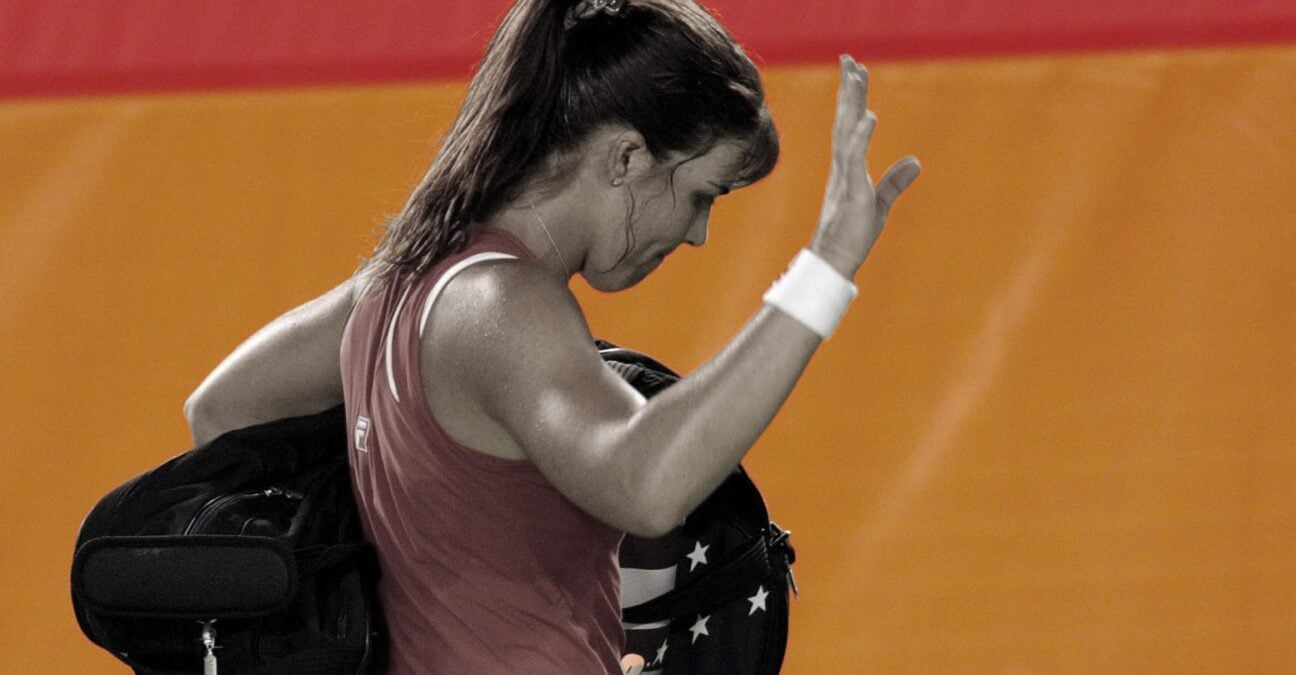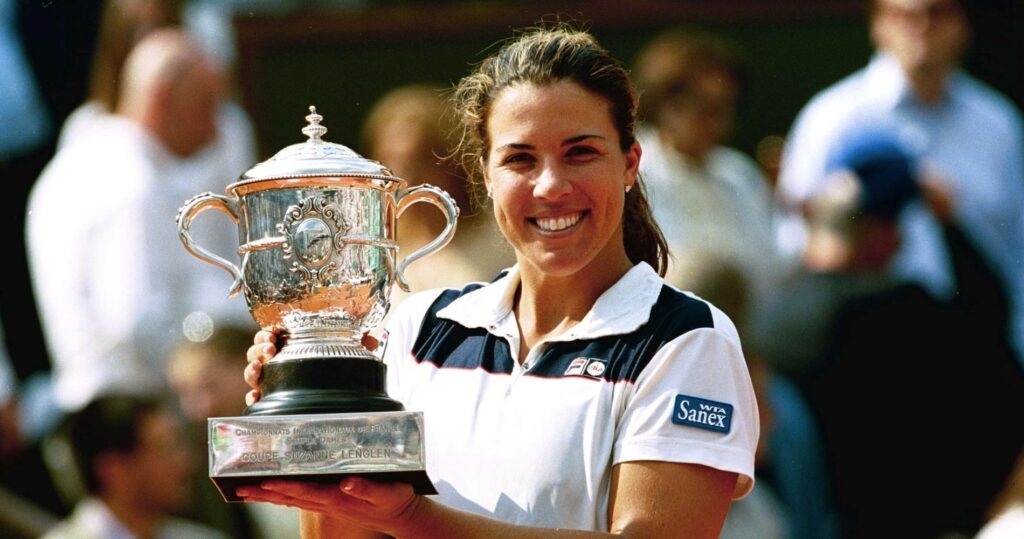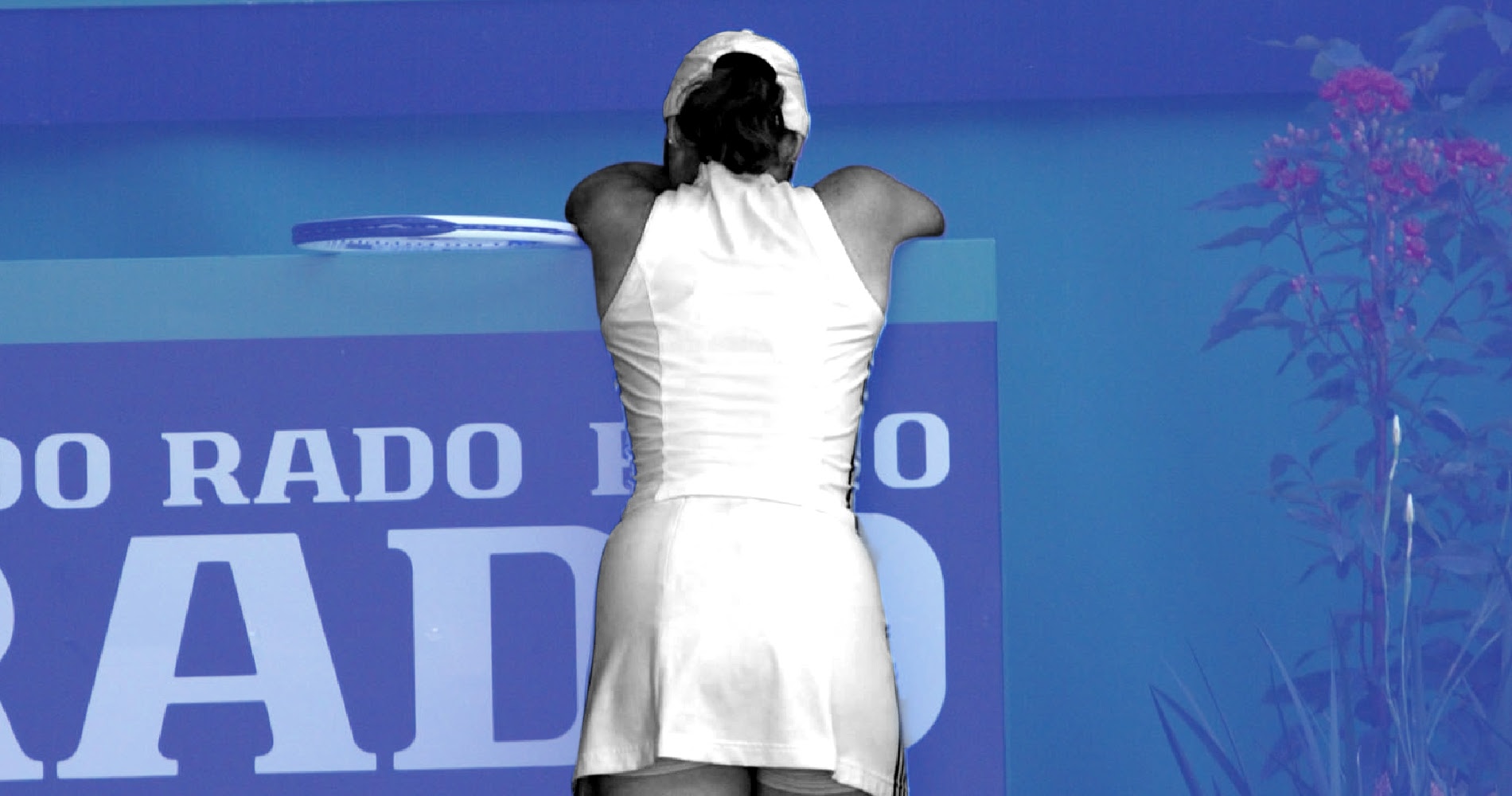January 13, 2003: The day Capriati became the first women’s defending champ to crash out in the first round of the Australian Open
Every day Tennis Majors takes you back in time to celebrate a great moment in tennis history. Today, we go back to 2003 to witness how world No 3 Jennifer Capriati blew a 6-2, 4-2 lead to be eliminated by world No 90 Marlene Weingartner, from Germany
 Jennifer Capriati at the 2003 Australian Open
Jennifer Capriati at the 2003 Australian Open
What exactly happened on that day?
On this day, January 13, 2003, Jennifer Capriati, the two-time defending champion, was defeated in the first round of the Australian Open by world No 90 Marlene Weingartner (2-6, 7-6, 6-4). This made the American the first women’s defending champion to exit in the first round of the Australian Open. Capriati hadn’t fully recovered from the eye surgery she had undergone at the end of the previous season.
The players involved: Jennifer Capriati and Marlene Weingartner
- Jennifer Capriati: The troubled prodigy who returned to become world No 1
Jennifer Capriati was born in March 1976, in Long Island, New York. In 1986, her family moved to Florida, where, under the guidance of Chris Evert’s father, Jimmy, she became a top tennis prodigy. Her power-packed groundstrokes were quite revolutionary in women’s tennis.
At the age of just 13, Capriati won the junior event at Roland-Garros and turned pro the very next year, in 1990, before she had even turned 14. In March, she reached the final of her debut WTA tournament, in Boca Raton, only being defeated by world No 2 Gabriela Sabatini (6-4, 7-5). Already ranked 24th in the world, Capriati then became the youngest player to ever reach the final four at Roland-Garros, where she eliminated world No 8 Mary Joe Fernandez, before losing to Monica Seles (6-2, 6-2). Defeated in the US Open fourth round by world No 1 Steffi Graf (6-1, 6-1), she had already climbed to No 11 in the world.
In 1991 and 1992, Jennifer Capriati kept rising, reaching the semi-finals at Wimbledon and the US Open, and clinching the gold medal at the Olympic Games in Barcelona (defeating Steffi Graf, 3-6, 6-3, 6-4). Unfortunately, she then struggled to handle the pressure put on her shoulders by the media, and in 1994, she even quit tennis temporarily and went through several struggles off the court (she was arrested for shop lifting and drug possession).

Back on the tour in 1996, she didn’t achieve any remarkable results until the 2000 Australian Open, where she reached the semi-finals. This was the start of her second innings: from then on, Capriati did not leave the top 10, claiming two Grand Slam titles in 2001 (the Australian Open and Roland-Garros). In October that year, Capriati became world No 1, and in 2002, she managed to defend her title at the Australian Open after a miraculous win over Martina Hingis in a scorching final (4-6, 7-6, 6-2). At the start of 2003, she was ranked No 3 in the world.
- Marlene Weingartner: Solid German WTA pro
Marlene Weingartner, a German player born in 1980, had never lived up to the potential she had shown in the juniors, where she reached the final of three Grand Slam tournaments. Since she began playing on the main WTA Tour in 1993, she never reached the final of a WTA tournament, and her best Grand Slam performance was reaching the fourth round at the Australian Open in 2002 (lost to Amélie Mauresmo, 6-0, 4-6, 7-5). After having reached world No 36 in 2002, the German was ranked No 90 at the start of 2003.
The place: The Australian Open, Melbourne
Unlike the other Grand Slam tournaments, the Australian Open (first known as the Australasian Championships and, later, the Australian Championships) had moved several locations throughout the years. In fact, the event switched cities every year before it settled in Melbourne in 1972, and no less than five Australian cities had hosted the event at least three times: Melbourne, Sydney, Adelaide, Brisbane and Perth. The event was held on grass at the Kooyong Stadium, in an affluent eastern suburb of Melbourne. Its timing had changed on several occasions as well, between early December and January, going from being the first Grand Slam of the year to being the last.
Until 1982, many of the top players skipped the Australian Open, mainly because of the remote location, and the low prize money, but then the dynamics began to change in the early 1980s. The tournament’s organisers made big efforts to become as prestigious as the other Grand Slams, which ended up with the event moving to a new location in 1988, in Flinders Park (later known as Melbourne Park), switching from grass to hard courts, and displaying the first-ever center court equipped with a retractable roof. Prize money increased as well, and it wasn’t long before the tournament became the favourite Grand Slam of many players.
The facts: Capraiti goes down after leading 6-2, 4-2
At the 2003 Australian Open, when Jennifer Capriati, the double defending champion and world No 3, faced Marlene Weingartner in the first round, no expert in the world would have thought that she was going to face any trouble. The German’s greatest achievement on the tour had been reaching the fourth round here, in Melbourne, 12 months earlier, and in their only previous encounter, in Charleston, in 2001, Capriati had easily prevailed, 6-0, 6-2.
At first, it looked like the world No 3 was cruising towards an easy win, taking the first set, 6-2, and taking a 4-2 lead in the second set. However, Weingartner, who had never played on the Center Court of a major tournament before, did not give up, and as she upped her level, Capriati’s game became more and more erratic. It was the German who clinched the second set 7-6.
Down 2-1 in the deciding set, the reigning champion took a toilet break, but it didn’t help her retrieving her game. While Weingartner fully took her chances, the American made an unusual number of double faults and unforced errors. Finally, defeated 6-4 in the last set, Capriati became the first female defending champion to exit the Australian Open in the opening round.
“It took a few minutes to realise that I’d won,” said Weingartner after her win, according to the BBC. “I’ve worked so hard for the last couple of months, I just went out there and went for it.”
However, in her press conference, Capriati gave an explanation for her poor performance: after having undergone eye surgery at the end of the previous season, which had kept her away from the courts for several weeks, she didn’t have time to fully prepare for the Australian Open.
“Probably if I wasn’t the defending champion I wouldn’t have shown up. I’m not trying to make excuses but I have to say it had a lot to do with my preparation,” said Capriati, quoted by The Guardian. “The recovery time from surgery just wasn’t enough. She (Weingartner) just got on a roll there. I just felt the momentum swing and mentally and physically I wasn’t strong enough, I guess.”
What next? Capriati never plays another match at the Australian Open
Marlene Weingartner would reach the third round of the 2003 Australian Open, defeated by Virginia Ruano (6-1, 4-6, 6-4). In 2004, in Bali, she would reach the only final of her career, defeated by Svetlana Kuznetsova (6-1, 6-4). She would retire as early as 2005, after having suffered from various injuries.
Reaching the semi-finals in three additional major tournaments, Capriati would remain a top 10 players until 2004, when she would retire from professional tennis due to a shoulder injury. Unfortunately, she wouldn’t play the Australian Open that year and her first-round loss against Weingartner would remain her last appearance at Melbourne Park. The American would get inducted into the Tennis Hall of Fame in 2012.















